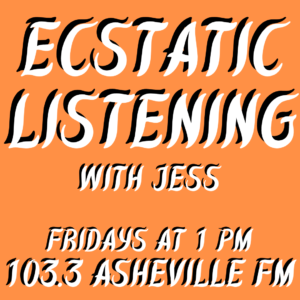fridays 1 pm – radio as performance art
Ecstatic Listening

Hosted By: Jess Speer
Genres: Death Rock, Electronic, Experimental, Folk, Freeform, Garage, Jazz, Local Artist, Metal, New Wave, Noise Pop, Psychedelic, Punk, Shoegaze, World Music
Related Show Posts
- BMC Radio Art Premier: “Archival Amalgamation I: All Our Holocausts” by Casey Edwards
November 14th, 2022On the November 14 edition of Ecstatic Listening (Mondays, 8-10…